A polyhouse is a type of greenhouse where a special polythene sheet is used as a covering material under which crops can be grown under partially or fully controlled climatic conditions. As crops grown in open fields are exposed to various environmental conditions, such as insect pests and diseases, polyhouses provide a more stable and suitable environment for crops. It is estimated that by following proper guidelines of polyhouse cultivation, we can earn a net profit of around 6-7 lakhs per acre in a year.
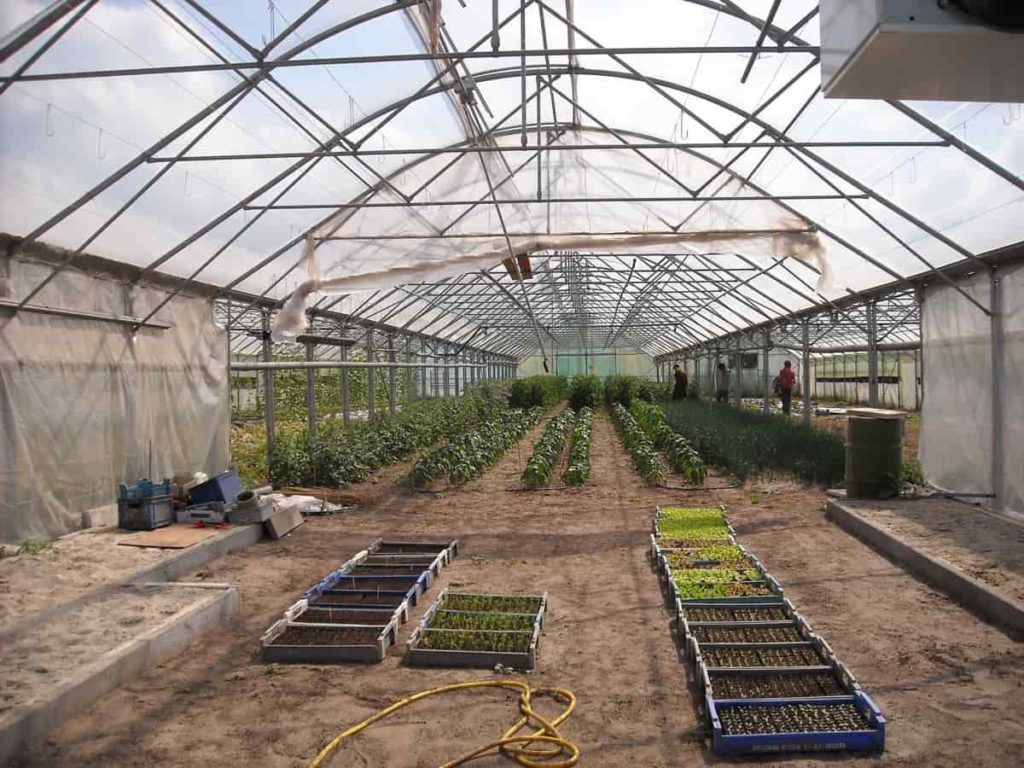
A guide to understand polyhouse farming
What is polyhouse farming?
A polyhouse is a type of greenhouse where polyethylene is used as the cover. In India, polyhouse farming is the most popular greenhouse technology because of its low construction cost. Depending on your needs, your structure can range from large structures to small bushes. The interior of this glass greenhouse heats up when exposed to the sun’s rays because the house helps prevent greenhouse gases from escaping.
As a result, when it’s freezing outside, plants benefit from a warm survival-friendly environment. The polyhouse farming method protects the crops from external conditions that can cause significant damage. Polyhouse cultivation is mainly used for the following purposes;
- Cultivation of plants in nurseries
- Cultivation of exotic vegetables like Broccoli, Lettuce, etc.
- Cultivation of vegetable crops like capsicum, Tomato, Cucumber, Brinjal, and Cabbage
- Cultivation in polyhouses for hybrid seed production of flowers
- Cultivation of plants for cut flower production
- Growing potted ornamental plants
How do I start a polyhouse?
Polyhouse consists of ozone layer-protected polythene sheets specialized in climate control. This polyethylene was used as covering material under which season or off-season crops are partially or fully controlled and can be grown in any climate. The polyhouse prefers drip irrigation and can maintain a tissue culture lab if required. It also provides cold storage facilities. Polyhouse farming increases crop yield by 10-12 times, depending on crop type and management.
Consequently, crop yield is influenced by various abiotic and biotic variables such as environmental conditions, disease control, and pest and nutrient management. Crop yield per unit area is optimized with careful fertilizer management, air movement, humidity, and the ideal temperature of 18-24°C. Polyhouses are more suitable for tropical and sub-tropical regions like India.
Modern-day polyhouses are built on the G.I. Steel frame and covered with plastic, attached to the frame with aluminium grippers. Most drip irrigation systems are installed inside the polyhouse for watering. Despite the change, polyhouse farming remains one of the most innovative ways to produce healthy food. On an industrial scale, it has become one of the leading methods used by large-scale farms worldwide. Suppose you are an aspiring entrepreneur who wants to start your own business.
In case you missed it: Earning 1.5 Lakh from Gerbera Cultivation in Polyhouse: A Success Story of a Farmer in India
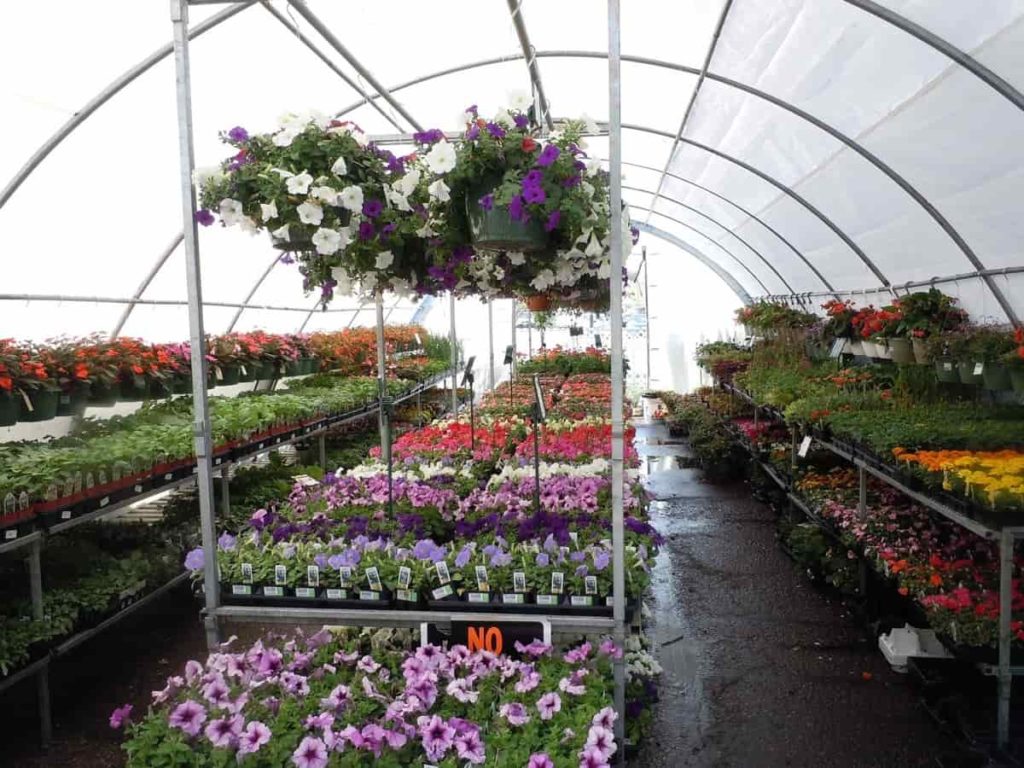
It would help if you considered the polyhouse farming industry as it has many possibilities. You are making it one of the most profitable businesses today. Polyhouse is an eco-house, thermally insulated against heat loss. They are making it more suitable for year-round living. There are skylights on the roof that allow natural light into the home. Thus, reliance on electricity for lighting during the winter months is avoided.
How do I choose a polyhouse site?
- It requires a minimum of 1000 square meters of the area to build a commercially viable polyhouse.
- The construction site should be higher than the surrounding land.
- The selected site should be free from contamination.
- Good road facilities should be provided to transport polyhouse produce to nearby markets.
- The site should be a well-drained area and not a location with waterlogging problems. Waterlogging can damage crops, especially in areas of heavy rainfall and flooding.
- The polyhouses should not be built near industrial units. It protects the crops from possible pollution effects.
- Although they should not be located very close to roads, they should be easily accessible by various modes of transportation.
Is polyhouse farming profitable?
- Polyhouse farming is 100% profitable if done properly; however, building a polyhouse can be expensive, and a commercial polyhouse can run for a few crore rupees.
- Although polyhouse farming reduces the subsidy burden, polyhouse construction is not for every farmer.
- A polyhouse – built as part of the state government’s ‘healthy farming practices’ – would help farmers protect crops or vegetables from sudden hailstorms, heavy rains, and erratic temperature changes. Even in harsh winters, polyhouses help farmers earn from off-season cultivation.
How many types of polyhouses are there?
Naturally ventilated polyhouse
Apart from proper ventilation and a fogger system, crops in this polyhouse are protected from inclement weather and natural pests and diseases. This special structure comprises G.I. Pipes, insect nets, and transparent plastic sheets, which protect crops from adverse weather conditions, insects, and viruses. In this type of polyhouse, all four sides of the polyhouse are covered with insecticidal, 40 mesh nylon netting. During summers, this plastic curtain is raised and lowered for proper cross ventilation with the help of pipes in winter.
The roof is covered with a 200-micron thick, transparent polyethylene film. An insect-proof nylon net is also used in place of ceiling ventilators for insect-free ventilation. This type of polyhouse does not require electricity. A low-pressure drip irrigation system is used for irrigation. This structure is suitable for peri-urban areas where high-value vegetables like Tomato, Capsicum, Cucumber, etc., and flowers like Rose, Chrysanthemum, and Gerbera can be easily grown.
Environmentally controlled polyhouses
This type of polyhouse helps extend the growing season by controlling light, temperature, humidity, carbon dioxide levels, and the nature of the rooting medium or allowing off-season production. These are primarily designed to prolong the growing period of crops or increase off-season production by regulating light, temperature, humidity, etc.
Based on suitability and construction cost, polyhouses can be further classified into three types. They are;
1. Low-cost or low-tech polyhouse – It is possible to make this polyhouse system with low-cost materials, which is very easy to maintain. A polyhouse is usually constructed from local materials such as wood and bamboo. An ultraviolet (U.V.) film is typically used as a cladding material. For cold weather conditions, this variety is suitable. Temperature and humidity can be controlled using shade networks. In this type of polyhouse, no other regulated devices shall be used.
2. Medium-cost or medium-tech polyhouse – This system involves the construction of polyhouses. The entire frame of the polyhouse is fixed to the ground to prevent any damage from wind flow, and the canopy cover is screwed into the housing structure. Humidity and temperature are controlled in this system by arranging cooling pads, mist sensors, thermostats, and exhaust fans. These types of polyhouses can be adopted in dry and humid weather conditions. It is very useful when plants require good care during their life cycle.
In case you missed it: Organic Turmeric Cultivation in Polyhouse (Haldi Farming)
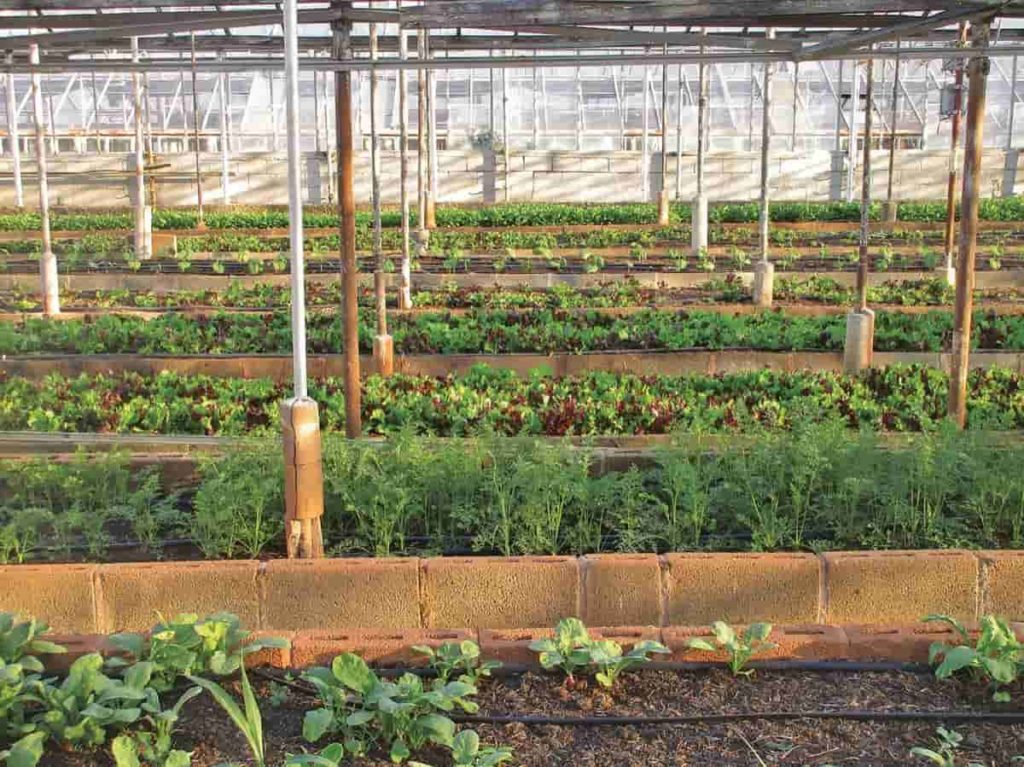
3. Expensive or high-tech polyhouse – The high-tech polyhouse provides all-time automatic temperature, humidity, fertilizer, irrigation, and other complete environmental parameters control system for growing crops.
Which crops are grown in a polyhouse?
The polyhouse used wooden frames to support the main structure. Modern-day polyhouses use stronger materials such as G.I steel or aluminum bars to provide extra support and greater strength. This material makes it possible for polyhouses to withstand harsh weather conditions, even in small sizes.
- Fruits: Papaya, Strawberry, etc.
- Vegetables: Kale, Cabbage, Capsicum, Colored Capsicum, Cabbage, Chili, Coriander, Okra, Onion, Radish, Spinach, Tomato, etc.
- Flowers: Carnation, Chrysanthemum, Gerbera, Gladiolus, Marigold, Orchid, Rose, etc.
A polyhouse can be used to grow various plants, crops, vegetables, and fruits. Mushrooms can also be grown in a polyhouse. Farmers can grow vegetables and flowers in a polyhouse, but flowers can give you more profit than vegetables; you should keep changing the types of flowers and don’t repeat the same flower over and over again. It would help if you studied before choosing any crop in polyhouse.
Do not choose those crops which grow well in open space, but they can be grown in polyhouse, but you will get the full benefit of polyhouse should be raised so you can choose some off-season crops and maintain the climate for these off-season crops so that they can give you good returns. You need to survey the market and select the most in-demand crops to make a good profit.
How to grow crops vertically in a polyhouse?
Indeterminate Cucumbers and Tomatoes are excellent examples of crops that can be grown vertically in a polyhouse. Growers can use more space efficiently when crops are grown vertically in a polyhouse. As a result, this method increases productivity by three to four times. Another advantage of vertical crop production in the polyhouse method is that crops can be harvested and trained. Regular pruning dramatically increases plant growth, benefiting you in the long term.
Vertical farming in polyhouse ensures high production with fewer resources, 80% water saving, labor intensive, and excellent quality. The polyhouse ensures that crops are protected from the vagaries of nature and disease without the need for harmful chemicals. Vertical farming has many advantages over conventional farming. Most importantly, it’s farming under your control. Control means production control, quality maintenance, and disease prevention.
What is the importance of Polyhouse?
- Your polyhouse plants are grown at a regulated temperature, so there is less chance of crop failure or damage.
- The number of insects and rodents in polyhouses is much less than in conventional farming techniques.
- The external climate will not affect the growth of the crop. Product quality is higher in polyhouse than in conventional farming techniques.
- A polyhouse provides your crops with a healthy air and drainage system. Polyhouse provides your plants with proper environmental facilities in all seasons. It also increases productivity by 5 to 10 times. The harvest time in polyhouse is very short.
- The fertilizer application is easy and is automatically managed with the help of drip irrigation.
- Your plants are grown in controlled temperatures, so there is less chance of crop loss or damage. You can grow crops year-round and don’t have to wait for a specific season.
- Polyhouse provides suitable environmental facilities for your plants in any season.
- Improved quality of the crop product as it is maintained under controlled environmental conditions—uniformity in plant growth, good plant vigor, better crop growth with minimal transplant shock.
- They are increasing crop productivity by reducing harvest time—better maintenance of cleanliness.
- Good drainage and aeration system.
- Ease of product handling, grading, and transportation.
- Easy application of chemicals and fertilizers by drip or sprinkler through fertigation.
What is the cost of a polyhouse for one acre?
The cost of a polyhouse depends on the type of device and the construction area you choose. Polyhouse construction costs may vary from time to time and by region.
- About 400 to 500 rupees per square meter for low cost/low tech polyhouse without exhaust fan system and cooling pad.
- A mid-cost/medium-tech polyhouse (without automation) with refrigeration pads and an exhaust fan system is priced at Rs. 900 to Rs. 1200 per square meter.
- A fully automatic control system high-tech polyhouse costs Rs. 2500 to Rs. 4000 per square meter.
- The cost of a natural ventilated polyhouse in 1 acre is around 32 lakhs, and after a 50% subsidy from the central government, it comes down to 16 lakhs. After adding around Rs. 1 lakh for some miscellaneous charges, it becomes Rs. 17 lakh for a 1-acre natural ventilated polyhouse. So 1-acre natural ventilated polyhouse cost is Rs.17 lakhs.
- Fan Pad Polyhouse is more expensive than Natural Polyhouse. The cost per acre of fan pad polyhouse is around Rs.55 lakhs. It is not mandatory to build a polyhouse on an acre of land. It depends on your requirement, and the only difference is that if you increase the size of the polyhouse, the cost will be less.
In case you missed it: Polyhouse Garlic Farming (Vellulli), Cultivation Practices
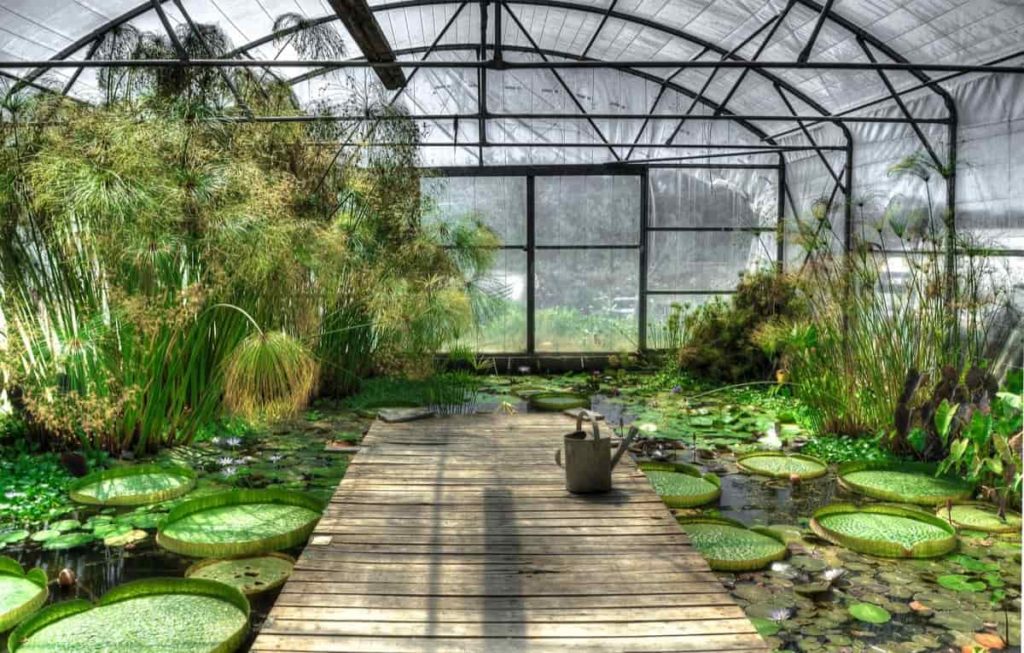
Which system of irrigation is followed in Polyhouse?
Drip irrigation is the best watering method due to its small root system. It should be ensured that the water spreads only in the root area and does not fall on the leaves or flowers. Falling on leaves and flowers can lead to infection, disease spread, and even burns. Micro-sprinklers force water out through nozzles under high pressure. These sprinklers are set at 1 foot above ground level to ensure that the water spreads to the base of the plants.
Polyhouse irrigation ensures water conservation by reducing evaporation and deep drainage when water can be more precisely applied to plant roots than other irrigation methods, such as flood or overhead sprinkler irrigation. In addition, the drip can eliminate many diseases that are spread by water contact with plants. There may be no real water savings in areas with limited water supply, but the drip irrigation system will provide a slower water flow in desert areas or sandy soils.
Irrigation systems are essential in modern farming as they significantly increase crop yields. A polyhouse irrigation system may seem expensive in the short term, but it will save you money and effort in the long run. For example, this system can help lower the cost of production by at least 30 percent as you control the amount of water, agrochemicals, and labor costs. However, getting a quality greenhouse irrigation system is advisable for significant benefits.
What is the difference between polyhouse and a greenhouse?
- A greenhouse is made of transparent material to create a microclimate inside the house. Different materials, like glass, wood, polyethylene, etc., are used as greenhouse covers to create a microclimate.
- A polyhouse is a type of greenhouse where polyethylene is used as the cover.
What material is used for polyhouse?
Modern-day polyhouses are built on the G.I. Steel frame and covered with plastic, attached to the frame with aluminum grippers. The white plastic film used for covering is of high quality, 200-micron thickness, with a 3-year guarantee against U.V. and weather degradation.
How is the temperature maintained in a polyhouse?
- During the day, solar energy enters the house after being reflected by the transparent surface of the polyhouse. This energy helps raise the temperature of the polyhouse.
- During this process, some energy enters the ground, which returns to the house at night, and its temperature rises.
What is the most profitable crop in polyhouse?
Tomatoes, Lettuce, Peppers, Cucumbers, Spinach, Herbs, and Strawberry plants thrive in a greenhouse environment and are some of the most profitable crops you can grow.
What are the different factors determining the adoption of polyhouse farming?
The main determining factor for farmers towards the adoption of polyhouse farming was farmers’ awareness of polyhouse farming practices. Farmers also have considerable experience in polyhouse farming. They also get technical, financial, and other support from institutions. Farmers were very aware of the profit they could get from this innovative cultivation. They were not ready to take the risk as polyhouse farming is a modern practice. The training was not enough to attract farmers to polyhouse farming.
In case you missed it: 16 Key Rules for Effective Greenhouse Farm Management: From Planning to Reducing Production Cost
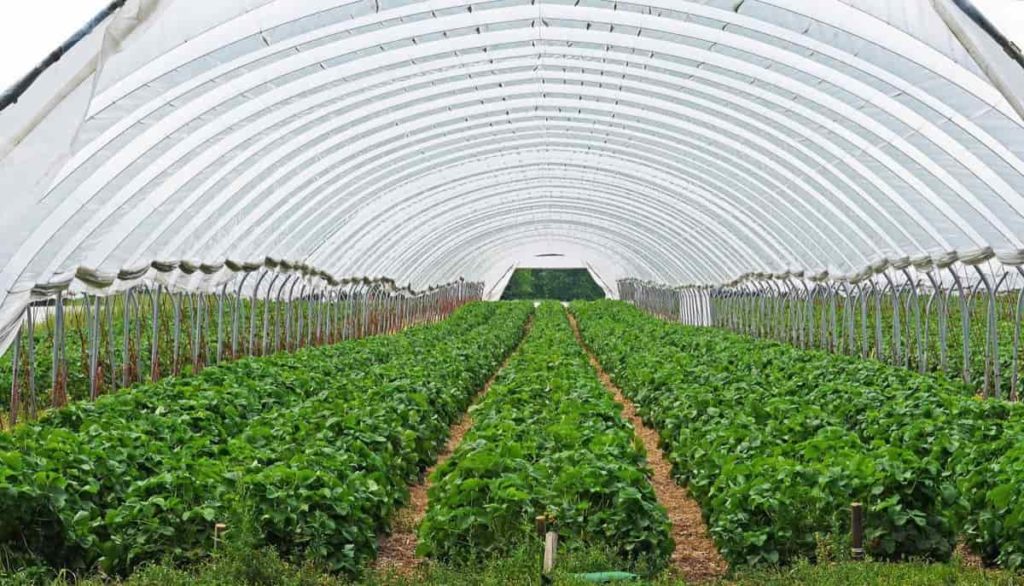
Polyhouse farming is greenhouse farming done on a small scale for crops like exotic flowers with high market value. A polyhouse or greenhouse is a house or structure made of translucent materials such as glass or polyethylene where plants grow and develop under controlled climatic conditions. The structure size can vary from small sheds to large buildings depending on the requirement.
Above all, a greenhouse is a glass house whose interior heats up when exposed to the sun’s rays because the house prevents the release of greenhouse gases. So when it’s cold outside, the temperature inside is friendly and warm for plants to survive. Polyhouse farmers can double their income with the right advice and guidance in farming. Polyhouses help enables the year-round production of desired crops.
It allows off-season production through potential manipulation of light, temperature, humidity, carbon dioxide levels, and the nature of the root medium. Complex environmental control systems create optimal plant growth conditions in modern polyhouses. Polyhouses are covered with a transparent material in which the crops are grown in a humid environment.
How to apply for polyhouse subsidy?
One can easily apply for polyhouse farming subsidy through the official scheme “Rashtriya Bagwani Mission” run by the central government. The government provides a 50% subsidy to any state or city farmer through this scheme. Still, one can claim the subsidy amount after the installation of the polyhouse, meaning that the farmer needs to invest the entire amount initially, and later, when the polyhouse installation is finished, can claim the subsidy amount; the amount will be transferred to the farmer’s account within 6 months.
Few people often say that polyhouse requires huge investment but returns only loss; the cost of polyhouse farming is quite high for small farmers, but you have to avoid loss due to lack of knowledge. However, it demands a good investment, but at the same time, you can take advantage of the government subsidy scheme, which allows you to pay only 50% of the total amount. The season also facilitates crop growth, giving you a good market advantage.
Lack of capital for investment and inadequate training are major problems faced by commercial growers or farmers who want to set up polyhouses. Farmers can benefit from the schemes launched by the National Horticulture Board. Under this special scheme, ‘development of commercial horticulture through production and post-harvest management of horticultural crops, the beneficiary gets a 50% subsidy for construction of polyhouse, the limit is Rs.56 lakh.
Some states offer up to 80% subsidy if a farmer builds his polyhouse 2,000 square meters or more. Various public and private institutions facilitate training programs to train farmers for polyhouse farming in India. While setting up a polyhouse, the farmer also receives support from institutions.
In case you missed it: High Yield Tomato Varieties in India: A Farmer Guide for Good Profits
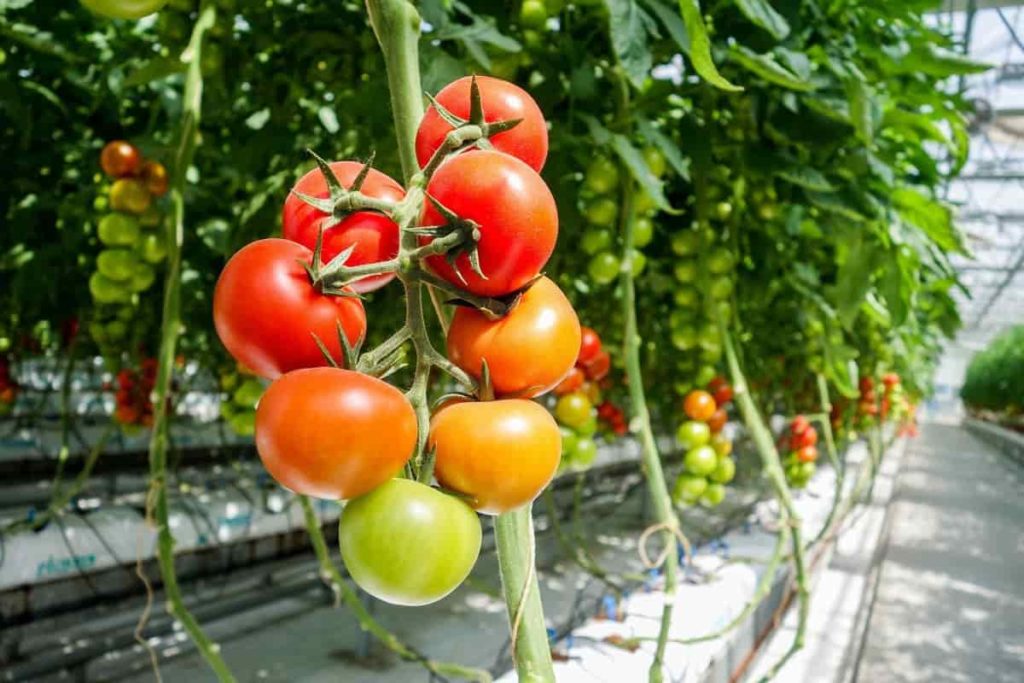
It is a revolutionary idea that resembles the green revolution to increase the productivity and profitability of farmers. Crops are grown in sheltered areas that protect crops from pests, diseases, and harsh weather conditions. As we know, outdoor crops are more vulnerable to rapid climate change, pathogens, and insects. Through polyhouse agriculture, we can control the effects of changing environment and increasing diseases.
Conclusion
A greenhouse, often known as a polyhouse, is a building or house made of polyethylene. This transparent glass-like substance allows plants to thrive and flourish in controlled environmental conditions. Polyhouse cultivation is the cultivation of crops under fully controlled environmental conditions such as temperature, humidity, fertilizer, etc., with an automated system.
- Types of Pesticides Used in Agriculture: A Beginner’s Guide
- Economical Aquaculture: A Guide to Low-Budget Fish Farming
- 15 Common Planting Errors That Can Doom Your Fruit Trees
- How to Make Houseplants Bushy: Effective Tips and Ideas
- Innovative Strategies for Boosting Coconut Pollination and Yield
- Pollination Strategies for Maximum Pumpkin Yield
- The Complete Guide to Chicken Fattening: Strategies for Maximum Growth
- Natural Solutions for Tulip Problems: 100% Effective Remedies for Leaf and Bulb-Related Issues
- Revolutionizing Citrus Preservation: Towards a Healthier, Greener Future
- Natural Solutions for Peony Leaf and Flower Problems: 100% Effective Remedies
- Maximizing Profits with Avocado Contract Farming in India: A Comprehensive Guide
- Natural Solutions for Hydrangea Problems: 100% Effective Remedies for Leaf and Flowers
- The Ultimate Guide to Choosing the Perfect Foliage Friend: Bringing Life Indoors
- From Sunlight to Sustainability: 15 Ways to Use Solar Technology in Agriculture
- The Ultimate Guide to Dong Tao Chicken: Exploring from History to Raising
- The Eco-Friendly Makeover: How to Convert Your Unused Swimming Pool into a Fish Pond
- Mastering the Art of Delaware Chicken Farming: Essentials for Healthy Backyard Flocks
- 20 Best Homemade Fertilizers for Money Plant: DIY Recipes and Application Methods
- How to Craft a Comprehensive Free-Range Chicken Farming Business Plan
- Brighten Your Flock: Raising Easter Egger Chickens for Beauty and Bounty
- How to Optimize Your Poultry Egg Farm Business Plan with These Strategies
- Subsidy for Spirulina Cultivation: How Indian Government Schemes Encouraging Spirulina Farmers
- Ultimate Guide to Raising Dominique Chickens: Breeding, Feeding, Egg-Production, and Care
- Mastering the Art of Raising Jersey Giant Chickens: Care, Feeding, and More
- Ultimate Guide to Raising Legbar Chickens: Breeding, Farming Practices, Diet, Egg-Production
- How to Raise Welsummer Chickens: A Comprehensive Guide for Beginners
- How to Protect Indoor Plants in Winter: A Comprehensive Guide
- Ultimate Guide to Grow Bag Gardening: Tips, Tricks, and Planting Ideas for Urban Gardeners
- Guide to Lotus Cultivation: How to Propagate, Plant, Grow, Care, Cost, and Profit
- Agriculture Drone Subsidy Scheme: Government Kisan Subsidy, License, and How to Apply Online
- Ultimate Guide to Raising Araucana Chickens: Breed Profile, Farming Economics, Diet, and Care
- Bringing Hydroponics to Classroom: Importance, Benefits of Learning for School Students
- Ultimate Guide to Raising Polish Chickens: Breed Profile, Farming Economics, Diet, and Care
- Ultimate Guide to Raising Australorp Chickens: Profile, Farming Economics, Egg Production, Diet, and Care
- Silkie Chicken Farming: Raising Practices, Varieties, Egg Production, Diet, and Care
- Sussex Chicken Farming: Raising Practices, Varieties, Egg Production, Diet and Care